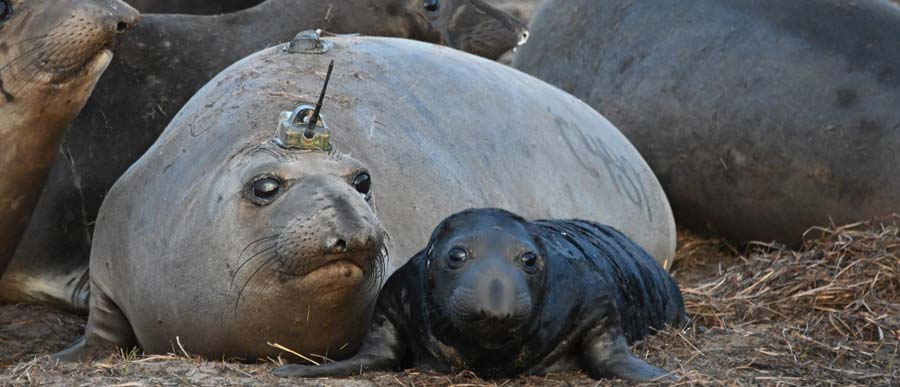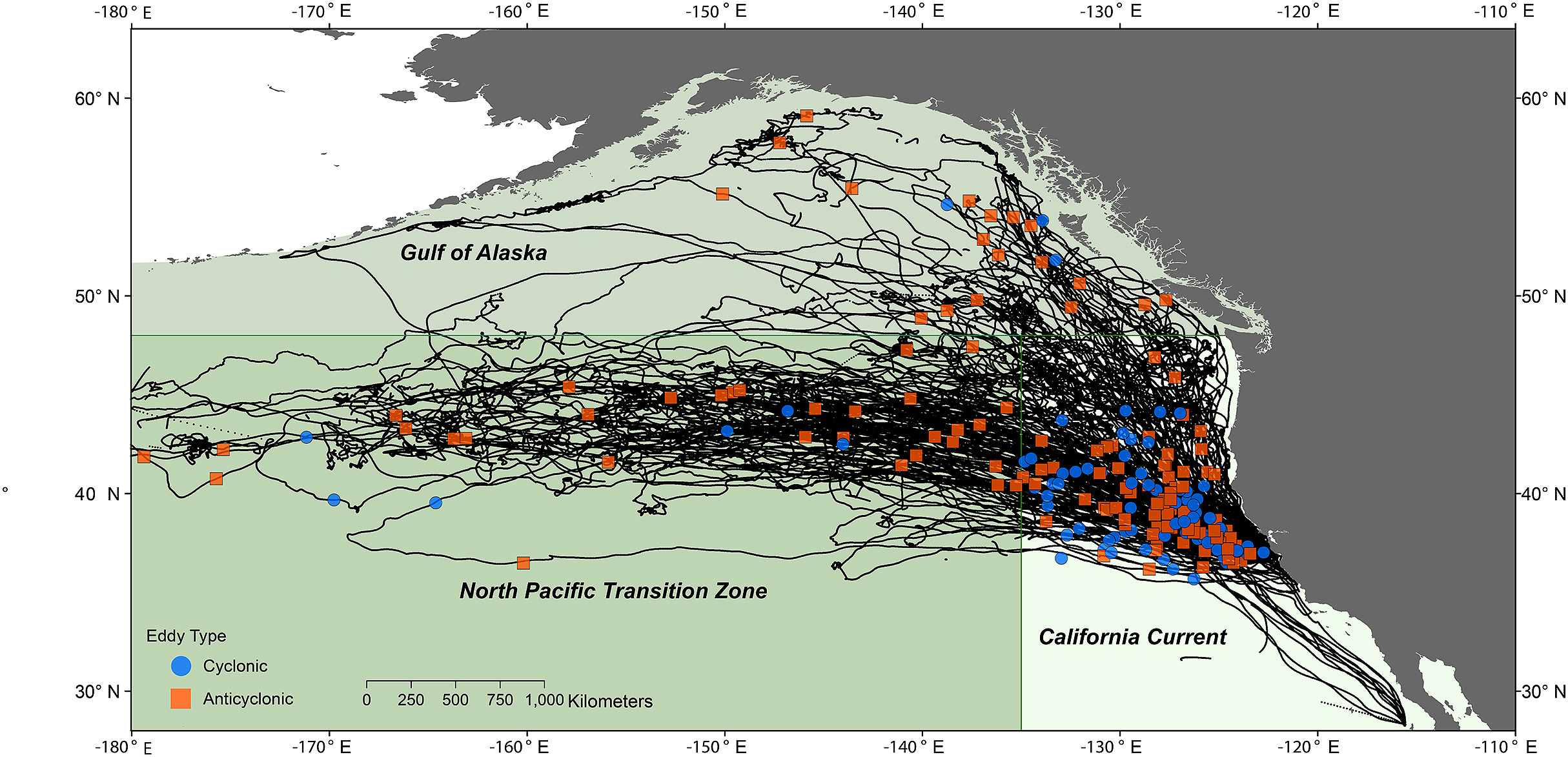← Back
Tracking northern elephant seals in ocean eddies

Understanding how a marine species uses the features of its environment is important for conservation. The northern elephant seals are close cousins to their southern equivalents. A number of tracking data exists, enabling to study their behaviors in comparison with ocean eddies and other environment data from remote sensing.
The northern elephant seal (Mirounga angustirostris) is found in the East of the North Pacific Ocean. They eat small fish and squid which are not possible to monitor permanently. The species was nearly extinct around late 19th century/early 20th century, but has recovered thanks to protection. However, a better understanding of how they are using the features of their environment will help in continuing protecting them. Ocean mesoscale eddies, in particular, are nutrient-rich, and a number of predator behaviors could be related to those features.
Tracking of northern elephant seals and eddies
A record of tracking data by Argos, and continuous in situ temperature measurements with also dive records, from 221 adult female northern elephant seals collected between 2004 and 2019 was used. The tracked seals were instrumented mostly at Año Nuevo State Park, California, USA (37.11°N, -122.33°W, individuals) and for a few at Islas San Benito, Mexico (28.30°N, -115.37°W; 20 individuals).
More info about animal tracking with Argos
A set of environmental data from remote sensing, including mesoscale eddy tracking atlas from altimetry satellites was compared to the tracking (see Elephant seals diving for science about southern elephant seals, or White sharks in eddies and meanders for an analysis of a top-predator tracking in comparison with eddies).

Elephant seal tracks (lines) and locations of eddy encounters (blue circles and orange squares). (from [Keates et al., 2022]
Eddies are used, but may not be actively looked for by northern elephant seals
Except for one individual which spent 30% of its time within and around eddies, most of the tracked seals spent little time in the detected eddies (however, the encounters kept for the analysis were only the ones detected with a high degree of certitude, which may have underestimated the time spent). However, when the elephant seals encountered an eddy, they spent more time across the edge (for both cyclonic and anticyclonic) or within (only for anticyclonic eddies). They were detected more in relation with anticyclonic eddies than cyclonic ones. The variability of behaviors seemed large between individuals, too, which show that an even larger number of tracking should be used in such studies.
Reference & link
- Theresa R. Keates, Elliott L. Hazen, Rachel R. Holser, Jerome Fiechter, Steven J. Bograd, Patrick W. Robinson, Juan Pablo Gallo-Reynoso, Daniel P. Costa, 2022: Foraging behavior of a mesopelagic predator, the northern elephant seal, in northeastern Pacific eddies, Deep Sea Research Part I: Oceanographic Research Papers, Volume 189, Nov. 2022, 103866, https://doi.org/10.1016/j.dsr.2022.103866.
- Marine Mammals Exploring the Oceans Pole to Pole
Main photo: a Female elephant seal with Argos PTTs (credit Dan Costa; National Marine Fisheries Service Permit #19108)

